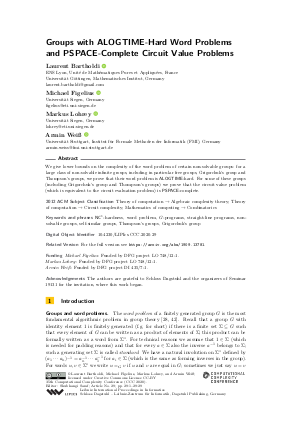LIPIcs.CCC.2020.29.pdf
- Filesize: 0.66 MB
- 29 pages

 Creative Commons Attribution 3.0 Unported license
Creative Commons Attribution 3.0 Unported license








Feedback for Dagstuhl Publishing